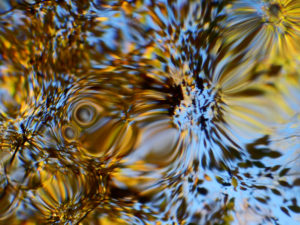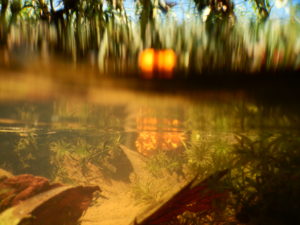Proposal for the University of Virginia Data Is ART Competition, 2024
“Our World is Water: Layers of Data and Images”
Alexandria Searls, photography/Meghan Powers, data and journaling
For over twenty years, Alexandria Searls has been documenting the Rivanna River in Charlottesville, Virginia, taking underwater and above water photographs that show changing patterns of rain and turbidity, plant life, erosion, and human and animal use. Meghan Powers is a third year University of Virginia linguistics and Spanish major who has been working with Alexandria on the documentation of the Rivanna River and its tributary, Trevillian’s Creek. She took the class ANTH 2260 “Water Worlds: The Anthropology of Water” in Fall 2023 that required keeping a journal with sketches, observations, and data on a local body of water. “Water Worlds” is taught by Professor Tessa Farmer, who teaches in the Anthropology Department and in the Program in Global Studies. Powers’ journal drawings, data research, and observational writings will comprise additional layers to Searls’ photography, sometimes in front of the image, and sometimes behind it.
Alexandria Searls is the Executive Director of the Lewis & Clark Exploratory Center in Charlottesville, which uses the journals of the Lewis & Clark Expedition as a starting point for teaching modern skills of documenting exploration, including video and mapmaking. The Exploratory Center is located on the Rivanna River. Participants in the LCEC programs make handwritten journals in addition to ESRI ArcGIS StoryMaps. Data is offered in multiple, interconnecting forms.
In addition to her position as Executive Director, Alexandria teaches photography and video in the Art Department of Piedmont Virginia Community College. Her underwater short films have shown internationally, including in festivals in Argentina, Mexico, and Great Britain.
For this proposal, Searls and Powers envision printing the photographs and the forms of data on acetate, layering them loosely so that there is space between the layers. The layers will also be able to be pulled to the side so that each element can be looked at separately as well as holistically. The acetate sheets will be six feet wide so that the viewer has an immersive experience within the water imagery and the corresponding data for that location. Some of the data will also be displayed in Spanish, so that data is seen as linguistically fluid, and not synonymous with English.
Searls recently completed an acetate and photography project with PVCC students at the annual “Let There Be Light” show. Images of fire were presented facing each other so that light shining through combined them, but with a sense of depth.
Here are examples of photographs of the Rivanna River watershed that would be included in the exhibition:




